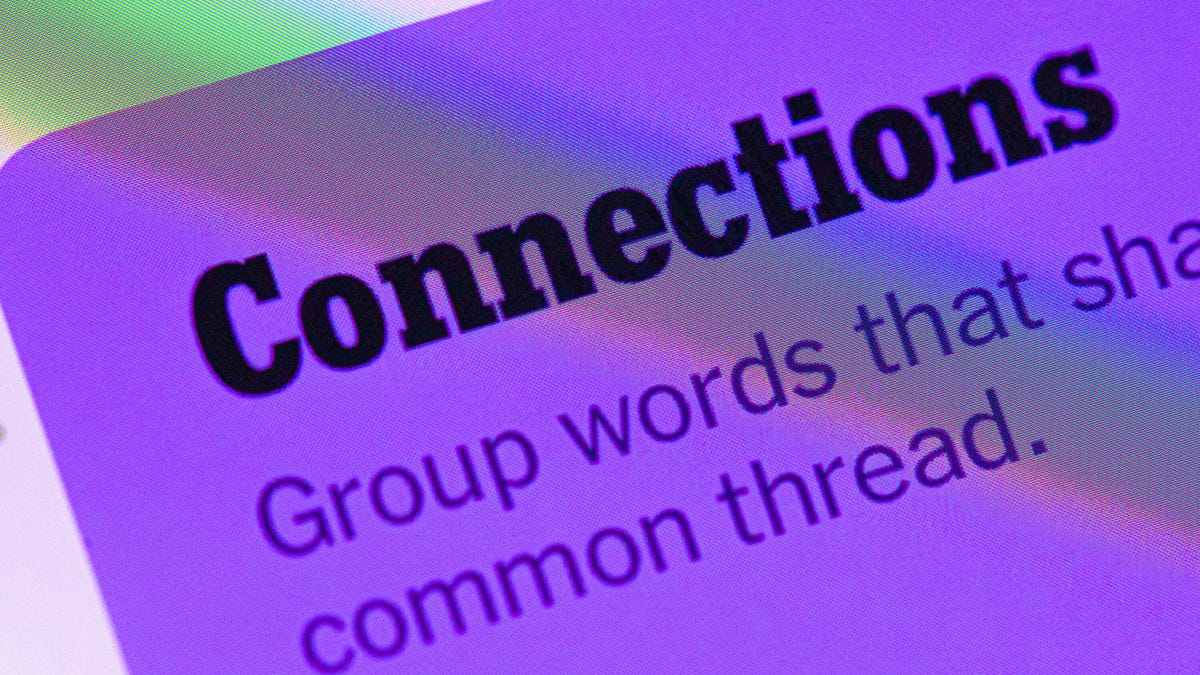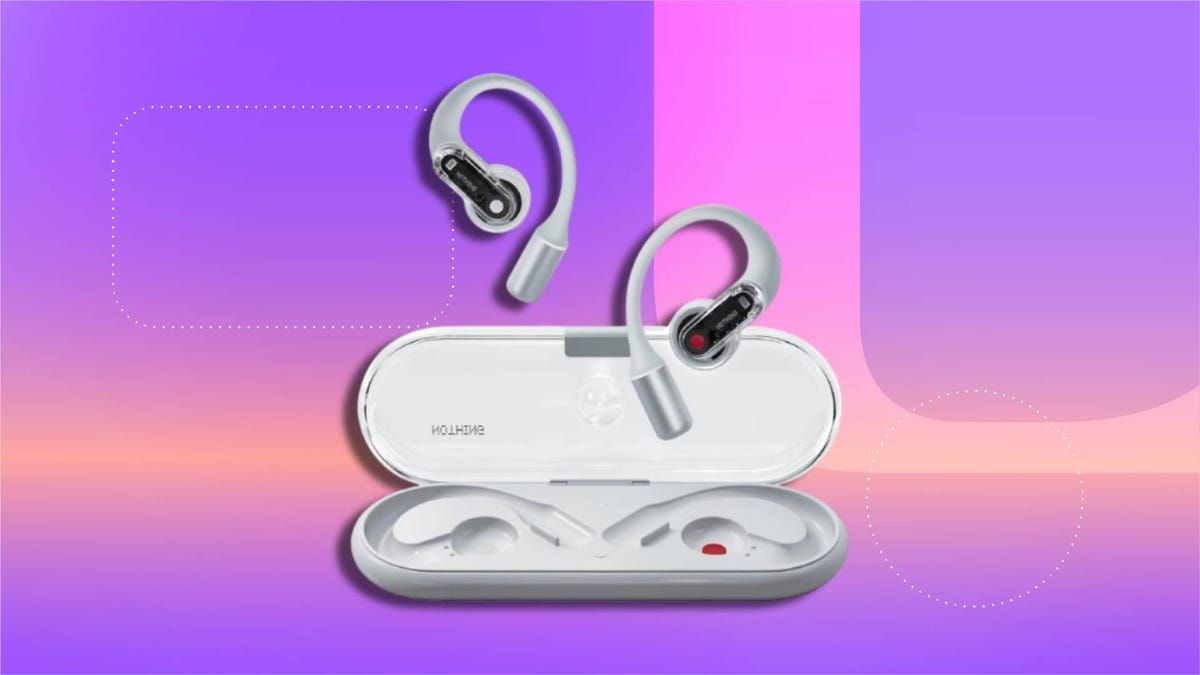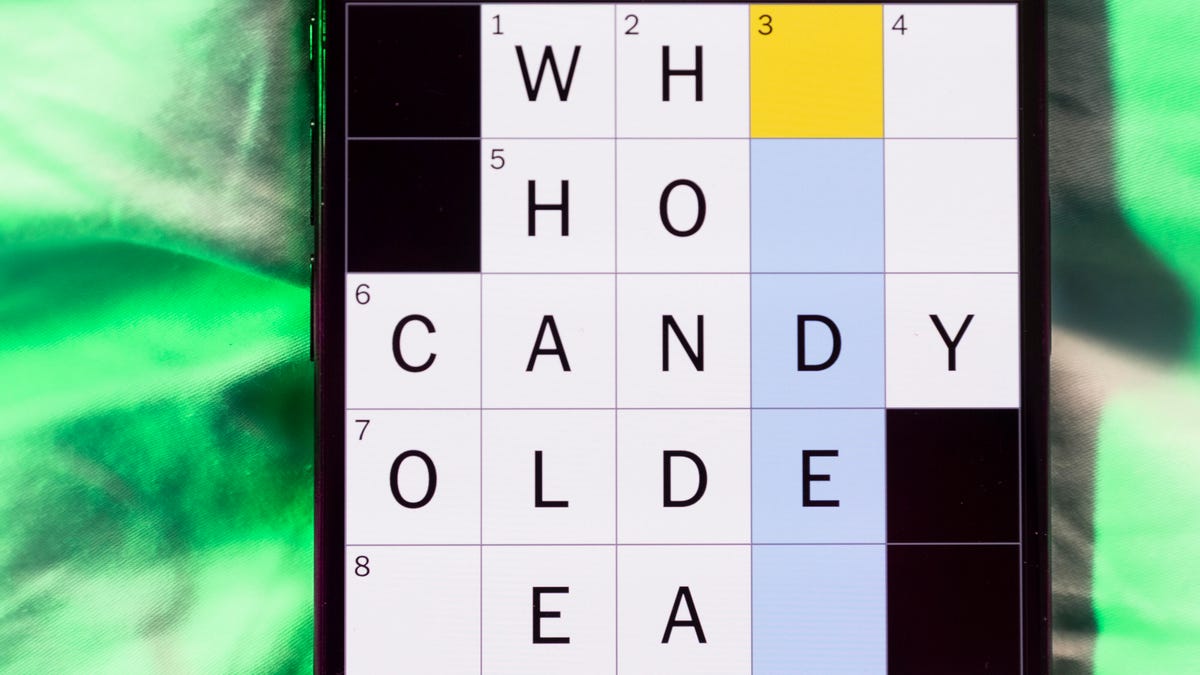Technologies
Battery, Bump and Budget: Comparing Google Pixel 9A to Pixel 9, 9 Pro and 9 Pro XL
Google’s newest budget phone packs surprises that stack up well against the rest of the nines.
With the Pixel 9A about to land on April 10, you may be looking at whether Google’s budget phone is the right choice for you — and if it’s wise to pick up a new phone before expected tariffs push up prices. Even as the low-cost offering in the Pixel 9 series, the Pixel 9A exceeds some specs found in its pricier siblings. Let’s look at how it compares to the Pixel 9, Pixel 9 Pro and Pixel 9 Pro XL.
With budget phones, the question is always, «What’s missing?» For example, Apple ditched MagSafe and stuck with a single camera for the iPhone 16E — which still comes in at $599. With the new Pixel 9A, what is Google giving up to hit a friendlier $499 price?
See also: Buy or Wait Guide: 10 Experts Predict How Tariffs Will Change Tech Prices in 2025 and What to Do Now
Hey, better battery
People consistently rate battery power as the most important consideration for a new phone, and here Google delivered. The Pixel 9A has a higher-powered battery than any of the other Pixel 9 phones. With a capacity of 5,100mAh, that’s more than the Pixel 9 Pro XL’s 5,060-mAh battery and a nice jump over the Pixel 9 and 9 Pro that each have a 4,700-mAh one.
The Pixel 9A is pokey about replenishing the battery, with a fast-charge rate at 23 watts instead of 45 watts on the other phones (and, of course, a charger is not included). Wireless Qi charging maxes out at 7.5 watts compared with 15 watts on the others.
A larger battery capacity in the Pixel 9A should support more intense computational work, along with the same Google Tensor G4 chipset as the other models. It will run the same Gemini AI features, although with less headroom: Its 8GB of RAM is generally considered the minimum amount of memory to run the algorithms and on-device processing used by AI. The Pixel 9 has 12GB of RAM, while the 9 Pro configurations have 16GB of RAM. For storage, the Pixel 9A comes in just 128GB or 256GB capacities.
Shaving costs with competent cameras
Not surprisingly, the cameras are a step down from the other Pixel 9 phones, reinforcing that mobile photography is an area people are willing to pay more for. The main wide camera captures 48-megapixel photos, compared with the 50-megapixel wide cameras on the others — which isn’t a significant difference. It is a drop from the 64-megapixel main camera on last year’s Pixel 8A but does support macro focus to ensure close-up photos are in focus.
The ultrawide camera, however, records just 13-megapixel images, compared with the 48-megapixel ultrawide cameras on each of the other models. Still, ultrawide cameras at 12- or 13-megapixel resolutions are still more common on phones from other companies, and they create good wide-angle images. Selfies via the front-facing camera are also 13-megapixel resolution, which is a step up from the 10-megapixel camera on the Pixel 9 but dwarfed by the 42-megapixel cameras on the 9 Pros.
A return to flatness
We all play along when phone companies reveal the thickness of their phones, which is measured by the depth of the bodies and usually doesn’t include the now-ubiquitous camera bumps. As long as most of a phone is svelte, it’s easy to overlook the extra few millimeters dedicated to the camera assembly — and the wobble when placed on a flat surface for some phones.
Why? Because the cameras are some of the most important features of a modern phone. We’ll accept a little cantilevering in exchange for 10x optical zoom.
Someone forgot to remind the Pixel 9A designers, though, because its dual camera lenses are nearly flush with the rest of the phone’s back. There’s still a tiny elevation, which CNET’s Patrick Holland described as «enough to catch your nail on it,» but compared with the pronounced camera ledge on the other Pixel 9 models, the Pixel 9A rests nearly flat.
The opposite side of the body has the same 6.3-inch OLED screen as the Pixel 9, measuring 2,424×1,080 pixels for a 422 pixels-per-inch density and a 60Hz to 120Hz variable refresh rate. It even maxes out at 2,700 nits like the Pixel 9.
The phone’s dimensions, however, are slightly larger than the Pixel 9, being 1.9mm taller, 1.3mm wider and 0.4mm deeper. Even so, the Pixel 9A is the lightest of the phones at 186g (6.6 ounces).
To compare the specs between all Pixel 9-series phones, dig into the details below:
Pixel 9A specs vs. Pixel 9, Pixel 9 Pro, Pixel 9 Pro XL
| Google Pixel 9A | Google Pixel 9 | Google Pixel 9 Pro | Google Pixel 9 Pro XL | |
| Display size, tech, resolution, refresh rate | 6.3-inch OLED; 2,424×1,080 pixels; 60-120 Hz variable refresh rate | 6.3-inch OLED; 2,424×1,080 pixels; 60-120 Hz variable refresh rate | 6.3-inch LTPO OLED; 2,856×1,280 pixels; 1-120Hz variable refresh rate | 6.8-inch LTPO OLED; 2,992×1,344 pixels; 1-120Hz variable refresh rate |
| Pixel density | 422 ppi | 422 ppi | 495 ppi | 486 ppi |
| Dimensions (inches) | 6.1 x 2.9 x 0.4 in | 6×2.8×0.3 inches | 6×2.8×0.3 inches | 6.4x3x0.3 inches |
| Dimensions (millimeters) | 154.7 x 73.3 x 8.9 mm | 152.8x72x8.5 mm | 152.8x72x8.5 mm | 162.8×76.6×8.5 mm |
| Weight (grams, ounces) | 186g (6.6 oz) | 198g (7 oz.) | 199g (7 oz.) | 221g (7.8 oz) |
| Mobile software | Android 15 | Android 14 | Android 14 | Android 14 |
| Camera | 48-megapixel (wide), 13-megapixel (ultrawide) | 50-megapixel (wide), 48-megapixel (ultrawide) | 50-megapixel (wide), 48-megapixel (ultrawide), 48-megapixel (5x telephoto) | 50-megapixel (wide), 48-megapixel (ultrawide), 48-megapixel (5x telephoto) |
| Front-facing camera | 13-megapixel | 10.5-megapixel | 42-megapixel | 42-megapixel |
| Video capture | 4K | 4K | 4K | 4K |
| Processor | Google Tensor G4 | Google Tensor G4 | Google Tensor G4 | Google Tensor G4 |
| RAM/storage | 8GB + 128GB, 256GB | 12GB RAM + 128GB, 256GB | 16GB + 128GB, 256GB, 512GB, 1TB | 16GB + 128GB, 256GB, 512GB, 1TB |
| Expandable storage | None | None | None | None |
| Battery | 5,100 mAh | 4,700 mAh | 4,700 mAh | 5,060 mAh |
| Fingerprint sensor | Under display | Under display | Under display | Under display |
| Connector | USB-C | USB-C | USB-C | USB-C |
| Headphone jack | None | None | None | None |
| Special features | 7 years of OS, security and Pixel feature drops; Gorilla Glass 3 cover glass; IP68 dust and water resistance; 2,700-nit peak brightness; 1,000,000:1 contrast ratio; 23W fast charging (charger not included); 7.5W wireless charging Qi certified; Wi-Fi 6E; NFC; Bluetooth 5.3; dual-SIM (nano SIM + eSIM); Add Me; Best Take; Magic Eraser; Magic Editor; Photo Unblur; Super Res Zoom; Circle To Search | Satellite SOS; 7 years of OS, security and Pixel feature drops; Gorilla Glass Victus 2 cover glass; IP68 dust and water resistance; 2,700-nit peak brightness; 45W fast charging (charger not included); 15W wireless charging with Google Pixel Stand (second gen); 12W wireless Qi-charging; Wi-Fi 6 and Wi-Fi 7; NFC; Bluetooth 5.3; dual-SIM (eSIM + nano SIM); Add Me; Best Take; Magic Eraser; Magic Editor | Satellite SOS; 7 years of OS, security and Pixel feature drops; IP68 dust and water resistance; Video Boost with 8K Upscaling; Macro Focus on ultrawide; Gorilla Glass Victus 2 cover glass; 3,000-nit peak brightness; 45W fast charging (charger not included); 15W wireless charging with Google Pixel Stand (second gen); 12W wireless Qi-charging; Wi-Fi 6 and Wi-Fi 7; NFC; Bluetooth 5.3; dual-SIM (eSIM + nano SIM); Add Me; Best Take; Magic Eraser; Magic Editor | Satellite SOS; 7 years of OS, security and Pixel feature drops; IP68 dust and water resistance; Video Boost with 8K Upscaling; Macro Focus on ultrawide; Gorilla Glass Victus 2 cover glass; 3,000-nit peak brightness; 45W fast charging (charger not included); 15W wireless charging with Google Pixel Stand (second gen); 12W wireless Qi-charging; Wi-Fi 6 and Wi-Fi 7; NFC; Bluetooth 5.3; dual-SIM (eSIM + nano SIM); Add Me; Best Take; Magic Eraser; Magic Editor |
| US price starts at | $499 (128GB) | $799 (128GB) | $999 (128GB) | $1,099 (128GB) |
| UK price starts at | Converts to £385 (128GB) | Converts to £640 (128GB) | Converts to £780 (128GB) | Converts to £860 (128GB) |
| Australia price starts at | Converts to AU$780 (128GB) | Converts to AU$1,210 (128GB) | Converts to AU$1,510 (128GB) | Converts to AU$1,670 (128GB) |
Technologies
Today’s NYT Connections Hints, Answers and Help for Oct. 29, #871
Here are some hints and the answers for the NYT Connections puzzle for Oct. 29, No. 871.

Looking for the most recent Connections answers? Click here for today’s Connections hints, as well as our daily answers and hints for The New York Times Mini Crossword, Wordle, Connections: Sports Edition and Strands puzzles.
Today’s NYT Connections puzzle has some very tricky words in the grid. You might not know the meaning of all of them, but if you need help, you’re in the right place. Read on for clues and today’s Connections answers.
The Times now has a Connections Bot, like the one for Wordle. Go there after you play to receive a numeric score and to have the program analyze your answers. Players who are registered with the Times Games section can now nerd out by following their progress, including the number of puzzles completed, win rate, number of times they nabbed a perfect score and their win streak.
Read more: Hints, Tips and Strategies to Help You Win at NYT Connections Every Time
Hints for today’s Connections groups
Here are four hints for today’s Connections puzzle groupings, ranked from the easiest yellow group to the tough (and sometimes bizarre) purple group.
Yellow group hint: Bravery.
Green group hint: Delivery method for media.
Blue group hint: Say, say, say.
Purple group hint: All the letters.
Answers for today’s Connections groups
Yellow group: Fortitude.
Green group: Channel.
Blue group: Words starting with the «say» sound.
Purple group: Things featuring letters A through Z.
Read more: Wordle Cheat Sheet: Here Are the Most Popular Letters Used in English Words
What are today’s Connections answers?
The yellow words in today’s Connections
The theme is fortitude. The four answers are backbone, courage, heart and spirit.
The green words in today’s Connections
The theme is channel. The four answers are medium, outlet, platform and venue.
The blue words in today’s Connections
The theme is words starting with the «say» sound. The four answers are sacrum, seitan, Seychelles and seance.
The purple words in today’s Connections
The theme is things featuring letters A through Z. The four answers are abecedarium, computer keyboard, Ouija board and Scrabble.
Technologies
Nothing’s Unique Ear (Open) Earbuds Are Back Down to $99 for a Limited Time
This limited-time deal knocks $50 off the $149 list price, a 33% savings on these open-ear favorites.

If you’re not a fan of silicone tips jamming uncomfortably inside your ears, open-ear buds are a great alternative. These lightweight models prioritize comfort, resting gently on your ear canal rather than inside it like traditional buds. They also let external sound in, so you can stay aware of your surroundings. And right now, you can treat yourself to one of our favorite open earbuds for less.
Amazon is currently offering the Nothing Ear (Open) earbuds for just $99, a 33% discount off the $149 list price. Grab the deal while it lasts. For more audio savings, check out our best headphone deals and top wireless earbuds picks.
Stepped drivers move sound closer to your ear without blasting it in. An automatic algorithm detects music signals, adjusting sound settings on its own for a more personalized experience. The diaphragm is uniquely shaped and titanium-coated for clear, balanced audio and the earbuds support EQ tuning and low-latency gaming via the Nothing X app.
You’re also getting a sound seal system that keeps the audio from leaking, so while you’ll stay aware of your surroundings, your listening stays private. One full charge gets you 30 hours of playback, and when you’re running low on power, a quick 10-minute charge gives you an extra two hours of use. The earbuds themselves offer up to 8 hours of playtime, with the fast-charging case adding 22 more.
Hey, did you know? CNET Deals texts are free, easy and save you money.
Bluetooth 5.3 ensures stable, low-latency audio and multipoint pairing — which lets you switch between devices seamlessly. Dual microphones with AI noise reduction trained on 28 million samples help keep calls clear, while ChatGPT voice control is available when paired with Nothing or CMF phones.
There’s also an IP54 rating for dust and water resistance — perfect for sweaty workouts, long commutes and the occasional adventure.
In his review, CNET’s audio expert David Carnoy calls these the best lightweight earbuds with earhooks among all the open-ear models he’s tested. Featuring the brand’s signature translucent plastic, they are super lightweight, fit comfortably and actually feel like nothing when you’re wearing them.
HEADPHONE DEALS OF THE WEEK
-
$300 (save $51)
-
$299 (save $151)
-
$220 (save $180)
Why this deal matters
Good quality earbuds that offer a secure-yet-comfortable fit, 30-hour battery life and AI-enhanced features typically cost well over $150. This deal gets you one of our favorite lightweight open-ear models for under $100 — a rare price drop on a standout design. Just be sure to get your orders in before Amazon pushes the price back up.
Join Our Daily Deals Text Group!
Get hand-picked deals from CNET shopping experts straight to your phone.
By signing up, you confirm you are 16+ and agree to receive recurring marketing messages at the phone number provided. Consent is not a condition of purchase. Reply STOP to unsubscribe. Msg & data rates may apply. View our Privacy Policy and Terms of Use.
Technologies
Today’s NYT Mini Crossword Answers for Wednesday, Oct. 29
Here are the answers for The New York Times Mini Crossword for Oct. 29.

Looking for the most recent Mini Crossword answer? Click here for today’s Mini Crossword hints, as well as our daily answers and hints for The New York Times Wordle, Strands, Connections and Connections: Sports Edition puzzles.
Need some help with today’s Mini Crossword? It’s a bit trickier than normal, so read on for the answers. And if you could use some hints and guidance for daily solving, check out our Mini Crossword tips.
If you’re looking for today’s Wordle, Connections, Connections: Sports Edition and Strands answers, you can visit CNET’s NYT puzzle hints page.
Read more: Tips and Tricks for Solving The New York Times Mini Crossword
Let’s get to those Mini Crossword clues and answers.
Mini across clues and answers
1A clue: Skill taught at lifeguard training, for short
Answer: CPR
4A clue: Bop it!
Answer: HEAD
6A clue: Not given anything to eat
Answer: UNFED
8A clue: Twist it! Pull it!
Answer: TAFFY
9A clue: Best of the best
Answer: ELITE
Mini down clues and answers
1D clue: Means of getting trash to a basement dumpster
Answer: CHUTE
2D clue: Word that can precede «code» or «colony»
Answer: PENAL
3D clue: «Baby Beluga» musician
Answer: RAFFI
5D clue: Neatly skillful
Answer: DEFT
7D clue: Change the color of, as hair
Answer: DYE
-

 Technologies3 года ago
Technologies3 года agoTech Companies Need to Be Held Accountable for Security, Experts Say
-

 Technologies3 года ago
Technologies3 года agoBest Handheld Game Console in 2023
-

 Technologies3 года ago
Technologies3 года agoTighten Up Your VR Game With the Best Head Straps for Quest 2
-

 Technologies4 года ago
Technologies4 года agoVerum, Wickr and Threema: next generation secured messengers
-

 Technologies4 года ago
Technologies4 года agoBlack Friday 2021: The best deals on TVs, headphones, kitchenware, and more
-

 Technologies4 года ago
Technologies4 года agoGoogle to require vaccinations as Silicon Valley rethinks return-to-office policies
-

 Technologies4 года ago
Technologies4 года agoOlivia Harlan Dekker for Verum Messenger
-

 Technologies4 года ago
Technologies4 года agoiPhone 13 event: How to watch Apple’s big announcement tomorrow
